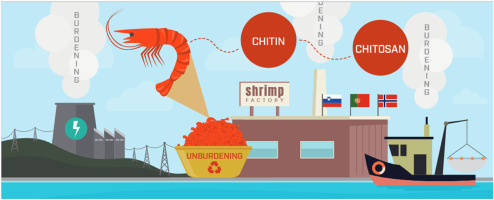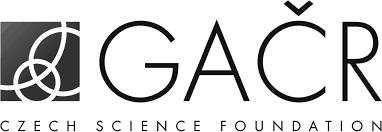Step towards resilience and sustainability through exploring renewable biomass and waste streams to produce higher-added value products and energy is among key aspects for closing the loops, saving resources, and reducing the resource and emission footprints. In that respective, crustacean shells waste can offer rich spectre of valuable compounds such as proteins, chitin, carotenoids. This waste is produced in large quantities worldwide, thus allowing for commercial valorisation. An overview of technologies is undertaken for more sustainable and environmentally friendly chitosan production via chitin isolation and conversion and compared to the conventional processes. Furthermore, an assessment of the environmental burden and energy demand distribution for conventional and more sustainable alternative processes was performed, based on lab-scale experimental data. Three different chitin extraction routes and three distinct chitosan conversion processes were considered and compared for their greenhouse gas footprint, abiotic depletion, acidification, eutrophication and other potentials. Finally, the energy demand distribution was analysed considering electricity production patterns from three European countries, Slovenia, Portugal and Norway. The results showed that alternatives 3-A and 3-B (conventional eco-solvents - conventional deacetylation with 40 % and 50 % NaOH) generate the lowest environmental burden (184 g CO2 eq./g chitosan). Electricity was the main hotspot of the processes, used either for extraction, plasma treatment or deacetylation. The sensitivity analysis proved that the Norwegian electricity mix has the lowest environmental impact (4.2 g CO2 eq./g chitosan). This study highlights the impact of blue biorefineries by transforming marine waste to valuable biopolymers such as chitin and chitosan.



